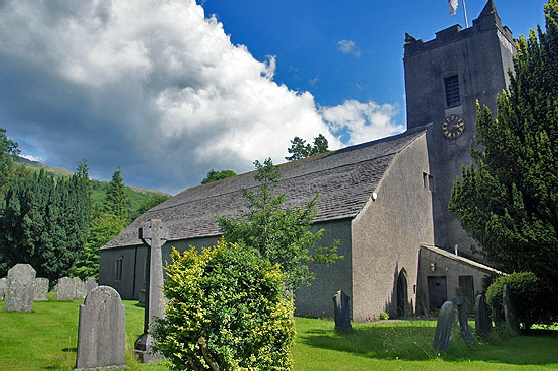|
Alphabetical List |
|
|
|
|
|
|
|
County List and Topics |
|
|
|
Please sign my Guestbook and leave feedback |
|
|
||||||||||||||||||||||||||||
|
in the village just for the ambience and tourist shops don’t turn your nose up at the church just because it looks awful and is awash with selfie-taking tourists. The oldest part of the present church, believe it or not, dates from 1250. Surprised? Then here’s something else to make you sit up: St Oswald - King Of Northumberland founded the first church here in AD642! Oswald chopped down a “sacred” oak and built a church, following a well-established policy of sequestering pagan sites for Christian purposes. Nobody is certain where this original church was situated despite considerable expenditure of time and intellect by local historians. So you see, Grasmere is not just the place that good ol’ Willie W happens to be buried. It’s an ancient place. The nave and west tower both date from 1250. I am struggling, however, to think of a single feature that would tell you that. The windows are a grim mix of post-Reformation styles of no merit. To the north of the nave is the enormous “Langdale Aisle”. It was originally built as a separate building, a “Chapel of Ease” for people living at this end of Langdale. There was quite a lot of parish and patron politics involved in this sort of thing. See Swaffham in Cambridgeshire for a really extreme example The two buildings each had gabled roofs with the inevitable consequence that the gully between the two collected water and snow. For those who are not British or who have never visited Britain I should add at this point that the Lakeland area is the wettest and one of the coldest in England. So in 1562 one John Benson of Baisbrown (in Langdale, I believe) bequeathed money for bringing it all under a single roof. Arches were cut through the existing dividing wall. The stone that had been removed was used to build the wall up higher so that there was now a single gable. What is bizarre is that the arcade is made of round headed arches and that a further arcade was added above it. I think it might have been Simon Jenkins who said that the outcome vaguely resembles the (Roman) Pont du Gard in Provence! Bizarre maybe, but also utterly charming and a welcome break with orthodox architectural practice. Crowning the whole interior what the Church Guide delightfully calls “A Tangle of Timbers”. Wordsworth himself was sufficiently charmed to write of it in one of his poems : “The Excursion”. See my footnote. Obviously the big attraction here is the Wordsworth graves. It’s a bit bonkers really. What in earth do we all get out of looking at a very ordinary headstone? Why do people come from all over the world to see it? Is Wordsworth really that popular? I’m a Keats man myself. Yet I’ve been to Grasmere half a dozen times and guess what? I’ve been to see the darned gravestone every time! There’s a lovely “feel” to this church that both delights and surprises you. For a start the floor is always covered in rushes. You might say it’s a bit cluttered with all the banners and knick-knacks but these are the signs that this church is not just a shrine to a famous poet but also the hub of a living community that is still there when the tourist buses have gone. There must have been a temptation to turn it into some kind of Wordsworth Museum but it’s a temptation the church has rejected. It’s kept its dignity. One last thing. You might feel a bit sniffy about Grasmere. “Tourist trap”, did I hear you snort? Yet it’s a very pretty place with a wonderful backdrop. It’s only full of tourists because it’s worth seeing. Of course it’s commercialised. So is Petra. So is Venice. Get over it because Grasmere is a nice place. |
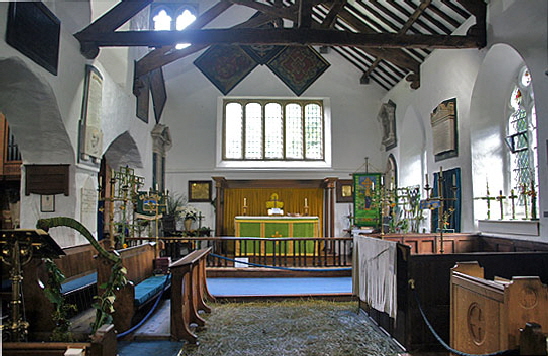 |
|||||||||||||||||||||||||
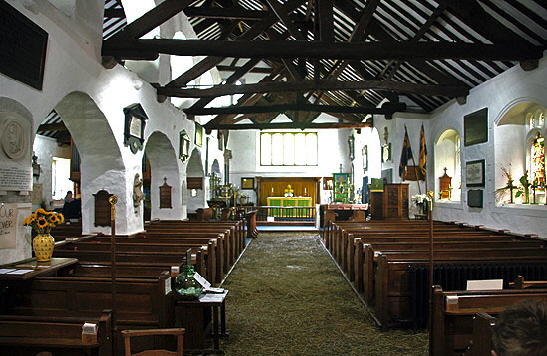 |
|||||||||||||||||||||||||
|
Left: Looking east down the nave. Note the rushes on the floor. Note also how the nave has its own network of timbers to support the roof. You look up expecting to see the gable but in fact that is over the arcade on the left! Right: The chancel which has no physical separation from the nave. Nor is there any sign that there ever was. Was there a wooden screen at some point in its history? |
|||||||||||||||||||||||||
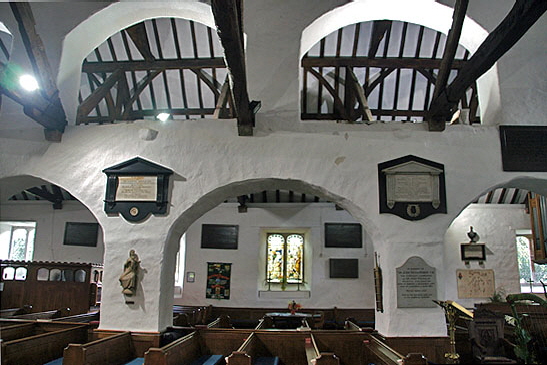 |
|||||||||||||||||||||||||
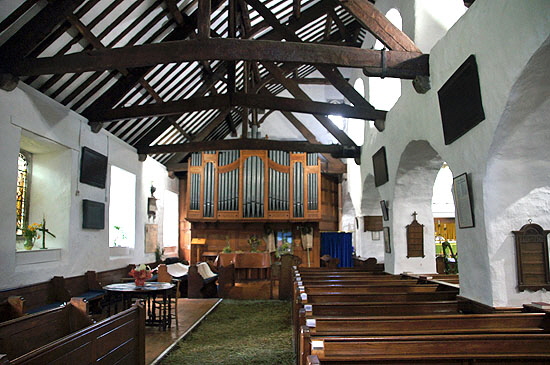 |
|||||||||||||||||||||||||
|
Left: This the Langdale Aisle looking towards the east. It’s not the most user-friendly arrangement because the thickness of the arches - or rather the thickness of the arches through which the arches have been cut. Remember, though, that this was originally solid wall and the Langdale Aisle would have been a self-contained church of its own. Right: The Pont du Gard-like arcade. Notice how crudely the openings have been fashioned. |
|||||||||||||||||||||||||
 |
|||||||||||||||||||||||||
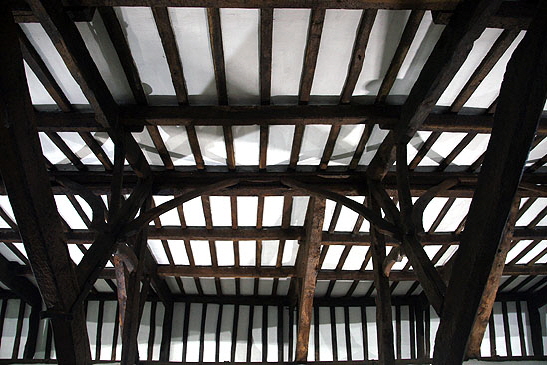 |
|||||||||||||||||||||||||
|
Left: Looking through from the aisle to the nave and chancel. Right: The forest of timber that supports the roof. |
|||||||||||||||||||||||||
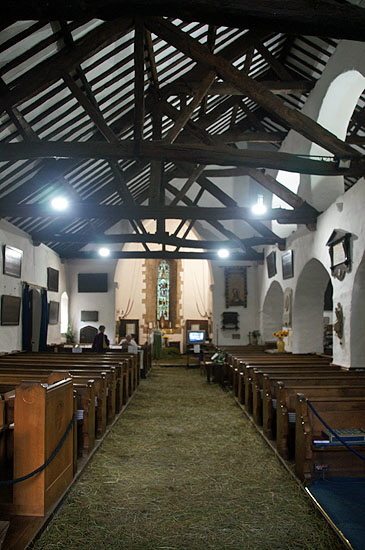 |
|||||||||||||||||||||||||
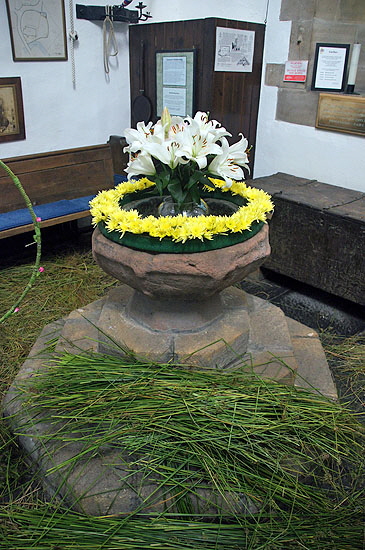 |
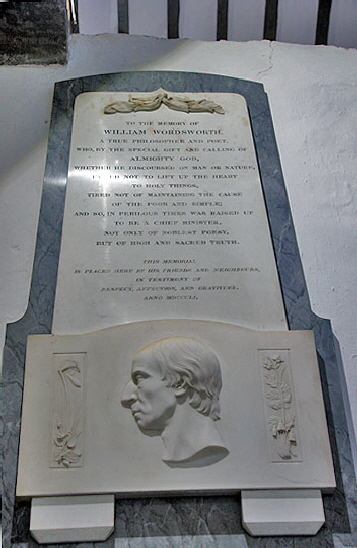 |
||||||||||||||||||||||||
|
Left: Looking down the nave through the tower to the west end of the church. The window looks promisingly like an Early English lancet which would be in keeping with a church of 1250 but I’m sure if you are regular reader of these pages you will be thinking that is unlikely at the west end and that its proportions are all wrong. In fact when you see it close up it has a bit of Gothic cusping at the top. The latest edition of Pevsner edited by Matthew Hyde is rather less dry that the great man’s original and I was amused to see the statement that the windows and doors “were done over by Webster in 1850”. The windows here are generally pretty grim and “done over” seems about right. Centre: The font is mediaeval, rather small and of indeterminate date. This picture gives some idea of the love bestoweed on this church by those that care for it. Right: A memorial tablet to Willy W dating from 1851. |
|||||||||||||||||||||||||
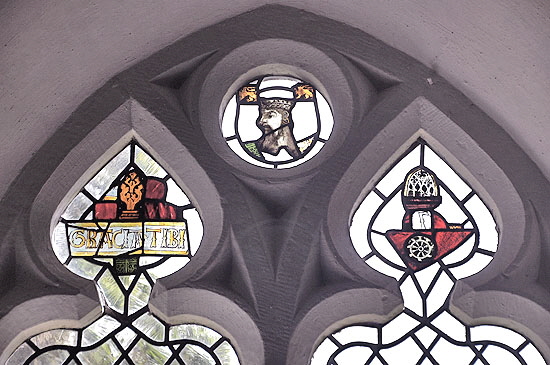 |
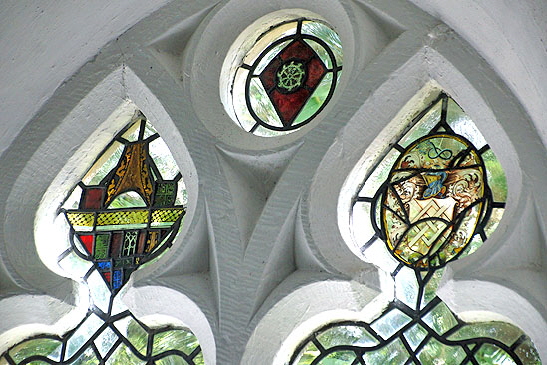 |
||||||||||||||||||||||||
|
Left and Right: This church is the better for its lack of overpowering Victorian stained glass. These mediaeval fragments preserved in the cusps of the windows in the south of the chancel. |
|||||||||||||||||||||||||
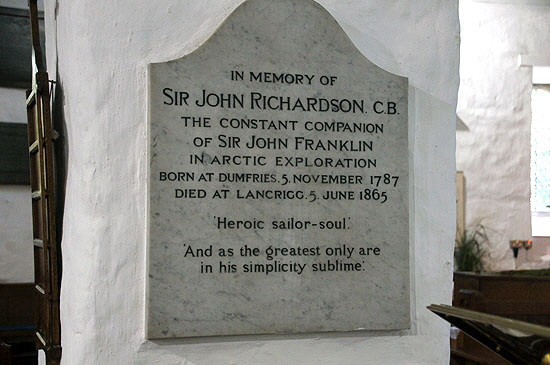 |
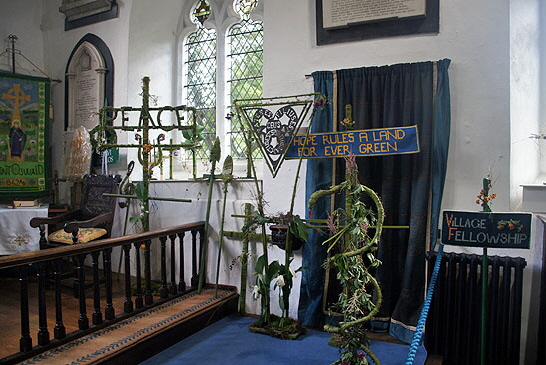 |
||||||||||||||||||||||||
|
Left: I suppose not to many people take note of this plaque. Some may know of Sir John Franklin who perished with all of his 129 men in search of the fabled “North West Passage” round the north coast of Canada to Asia in 1845. It is one of the great and tragic stories of British exploration. The remains of one of Franklin’s two ships - HMS Erebus - was found in 2014 and the other - HMS Terror - was found in 2016. Richardson was a naturalist who accompanied Franklin in some of his earlier overland expeditions to Canada and Wikipaedia says that together they surveyed 1,878 miles of previously unmapped coastline. Right: Grasmere Church is never short of these welcoming touches. |
|||||||||||||||||||||||||
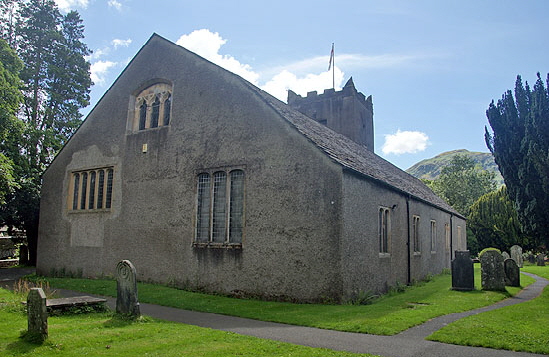 |
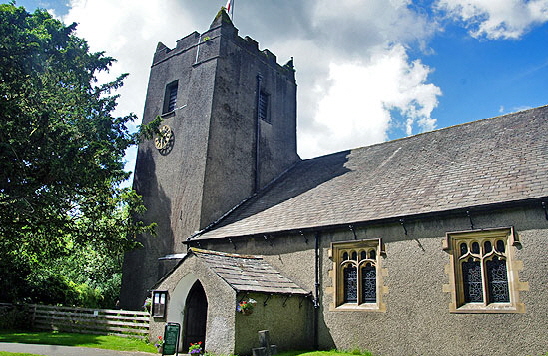 |
||||||||||||||||||||||||
|
Left: The church from the north east, You can clearly see the peculiar roofline. The windows are pretty awful and the rendering beyond awful. Who would guess how nice it is inside? Right: The church from the south. The west tower is of 1250. That’s something else you wouldn’t guess. |
|||||||||||||||||||||||||
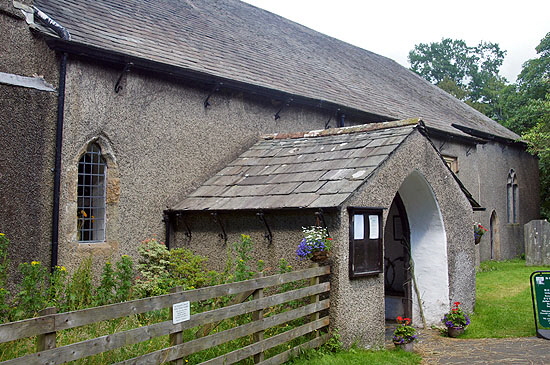 |
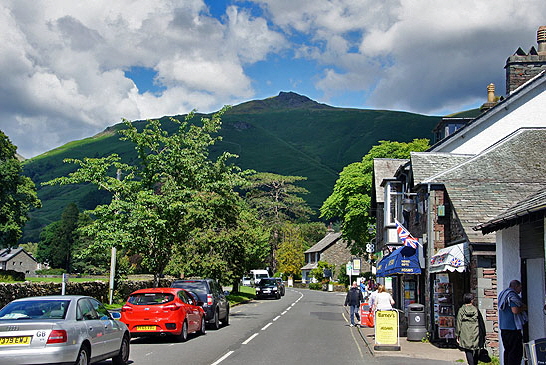 |
||||||||||||||||||||||||
|
Left: The south side and the porch. Right: Looking over the fells in Grasmere. This is a village surrounded by mountains and fells. The drive from Ambleside to Keswick via Grasmere is an absolute delight and it would be utterly perverse not to stop off at Grasmere. That parking fees are a bit steep as they are in many Lakeland towns but car parks, toilets and other tourist facilities have to be paid for somehow, don’t they? |
|||||||||||||||||||||||||
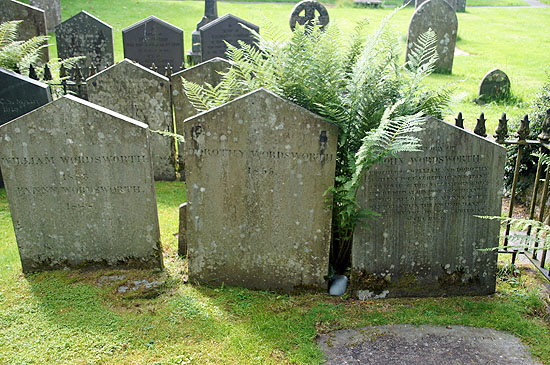 |
|||||||||||||||||||||||||
|
Wordsworth family grave. On the left is William and in the centre is Dorothy. Unassuming, aren’t they? I can’t help liking that. |
|||||||||||||||||||||||||
|
Footnote - “The Excursion by William Wordsworth |
|||||||||||||||||||||||||
|
This extract is from the (very good) Church Guide written in 2015 by the incumbent, Cameron Butland. The poem is actually a long one about a man’s wanderings but this is the reference to the church and its roof: Not raised in nice proportion was the pile, But large and massy; for duration built; With pillars crowded, and the roof upheld By naked rafters intictaely crossed Like leafless underboughs in some thick wood All withered by the depth of the shade above. |
|||||||||||||||||||||||||
|
|
|||||||||||||||||||||||||
